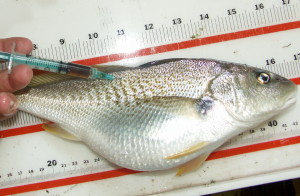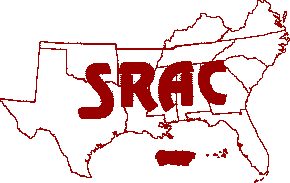
Need assistance with wildlife and fish management on your ranch, backyard, or pond? Simply call your local County Extension Agent.
The demand for fish for food, recreation, and ornamental aquariums is steadily increasing. Natural fish populations have declined during the last several decades because of environmental degradation and over-fishing. This has resulted in an increased effort in the development of techniques for hatchery production of fish. Traditional aquaculture species such as trout, catfish, common carp, golden shiner, and goldfish reach sexual maturity and spawn in hatcheries or ponds, when conditions are appropriate. However, a number of fish species that have or potentially have great economic significance for aquaculture do not reproduce spontaneously in captivity. Many of these fish spawn in environments that are nearly impossible to simulate in a hatchery. Hormone-induced spawning is the only reliable method to induce reproduction in these fishes. Hormone-induced spawning of fish has been used for almost 60 years. Surprisingly, the same procedures, with only minor modifications, have been used to spawn an entire range of fishes from the ancient sturgeon and paddlefish to carp, catfish, salmon, sea bass, redfish, snook, and mullet. In addition to breeding other desirable fish species, induced spawning can be used to:
1) produce hybrids that are different from the parent species;
2) produce sterile polyploid fish (for example, sterile triploid grass carp for aquatic weed control);
3) synchronize reproduction of large numbers of fish for simultaneous spawning, thereby simplifying production and marketing of the fish;
4) produce fry outside the normal spawning season for maximum hatchery production and to provide fish when the price and market demand is greatest; and
5) maximize survival of fry under controlled hatchery conditions.
-SRAC Publication No. 421, Introduction to Hormone-Induced Spawning of Fish

